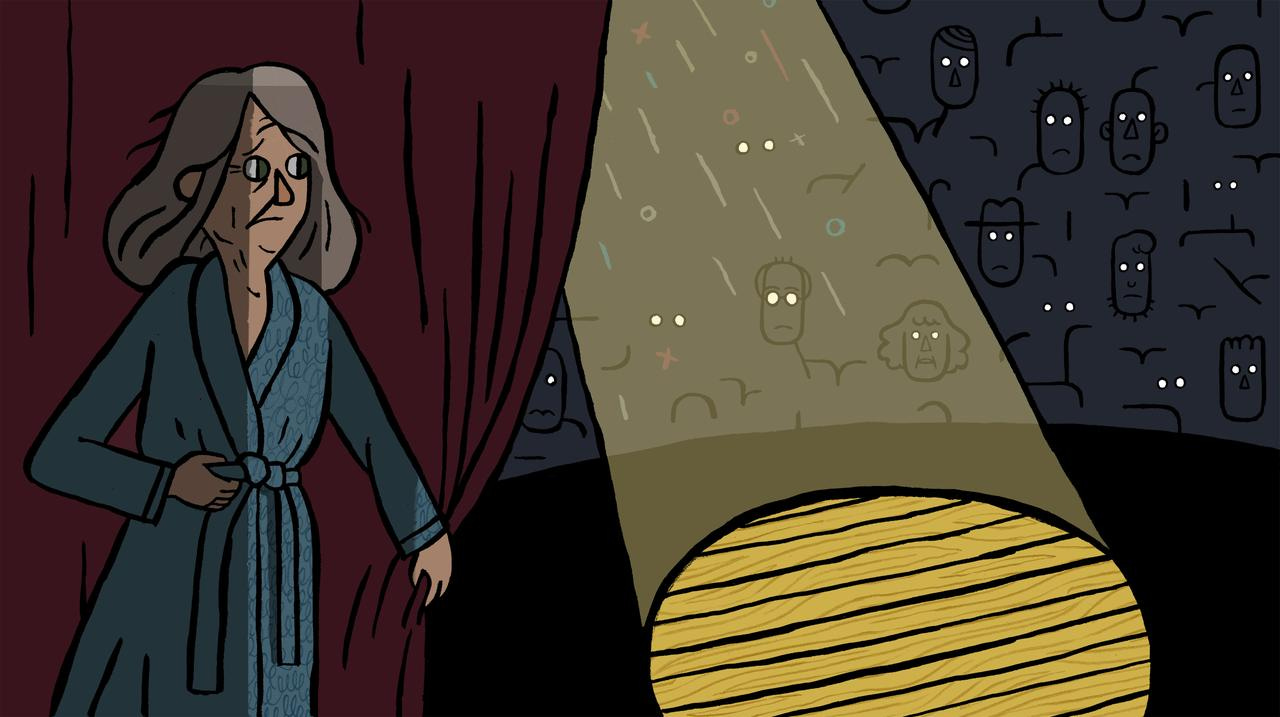The Secret World of Showbiz Seniors
Most think of acting as a young person’s pursuit, but granny rappers and sexy retirees are hot right now.

Illustrations by Vinnie Neuberg
The posting from an online casting site announced an audition at a local theater for a production of Agatha Christie’s “Ten Little Indians.” Each role specified the age, gender and race, and I matched one of them. I was sixty-two, female, white, and a few years into retirement from my thirty-seven-year career as a probation officer for Los Angeles County. For the last two years, I had been taking an acting class for seniors in Los Angeles, but I had not tried to get paid work out of it until now.
I’d read in one of my acting books to dress as the character you’re auditioning for, so I ran around my house pulling out clothing that was the opposite of my usual wardrobe to create an English spinster outfit: an A-shape, mid-calf, tweed skirt; plain, long-sleeve blouse buttoning to the neck; horn-rimmed glasses; flat shoes with laces; hairpins to flatten my hair; and no makeup. I was tall and slender, and I knew I was attractive enough with my medium-length bl…
Keep reading with a 7-day free trial
Subscribe to Narratively to keep reading this post and get 7 days of free access to the full post archives.


